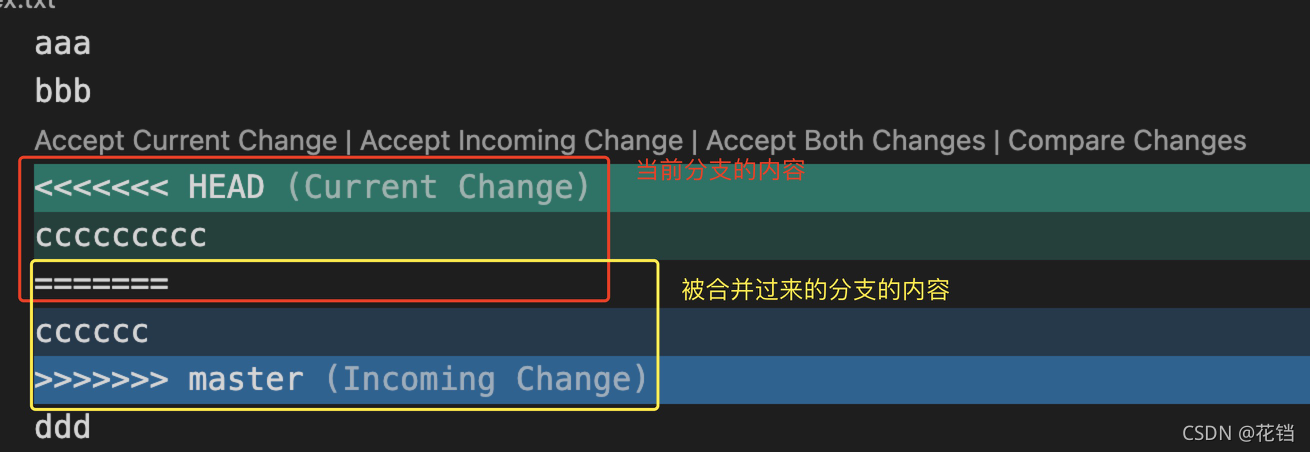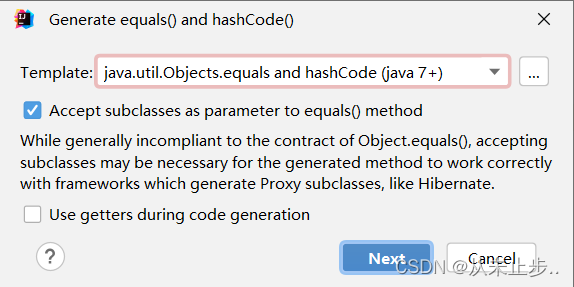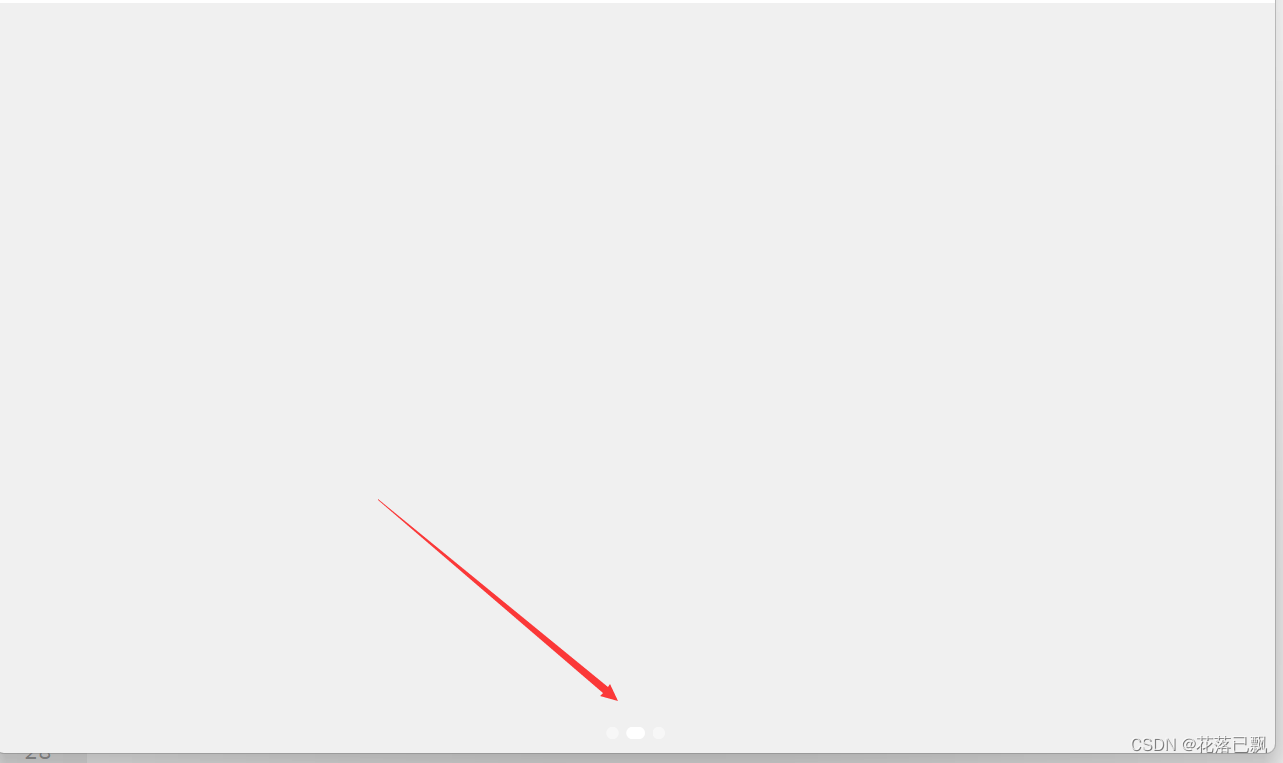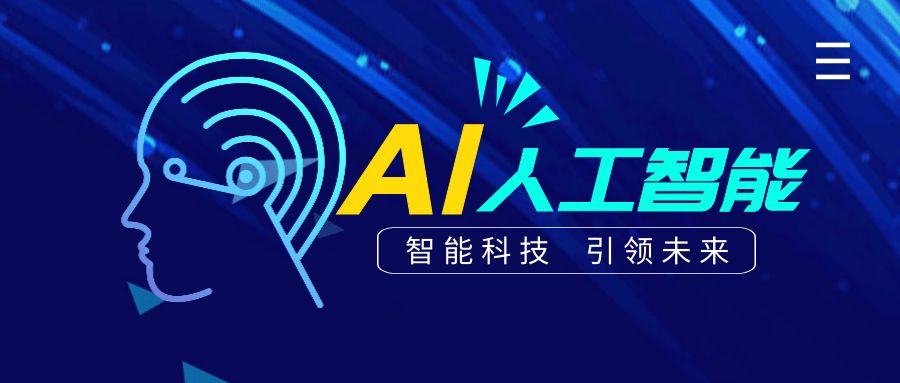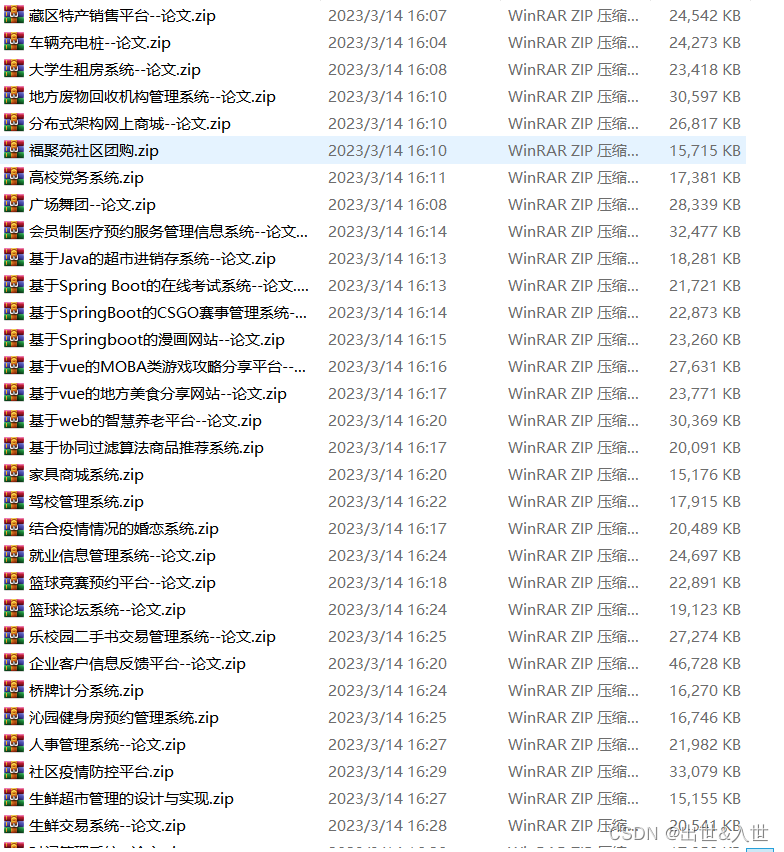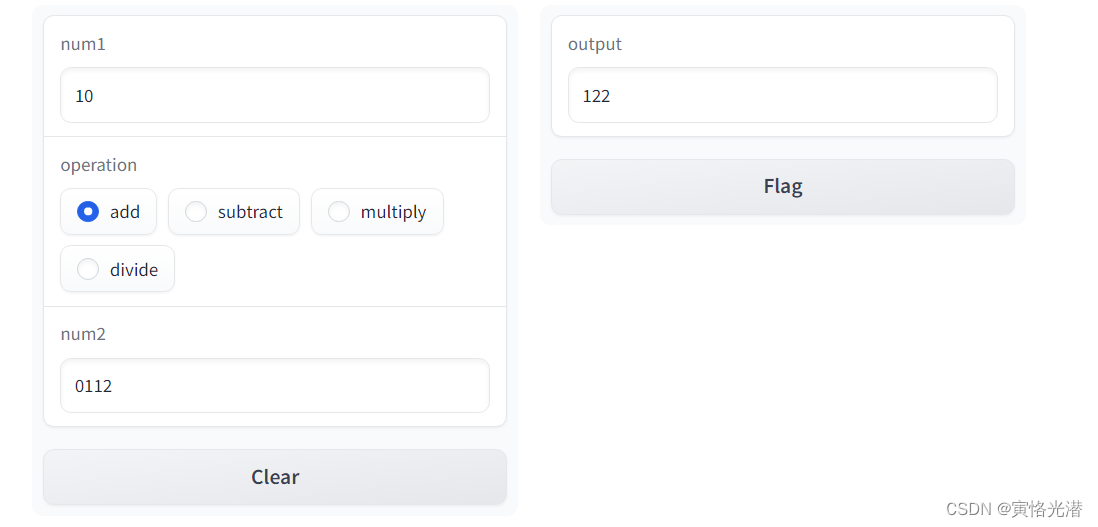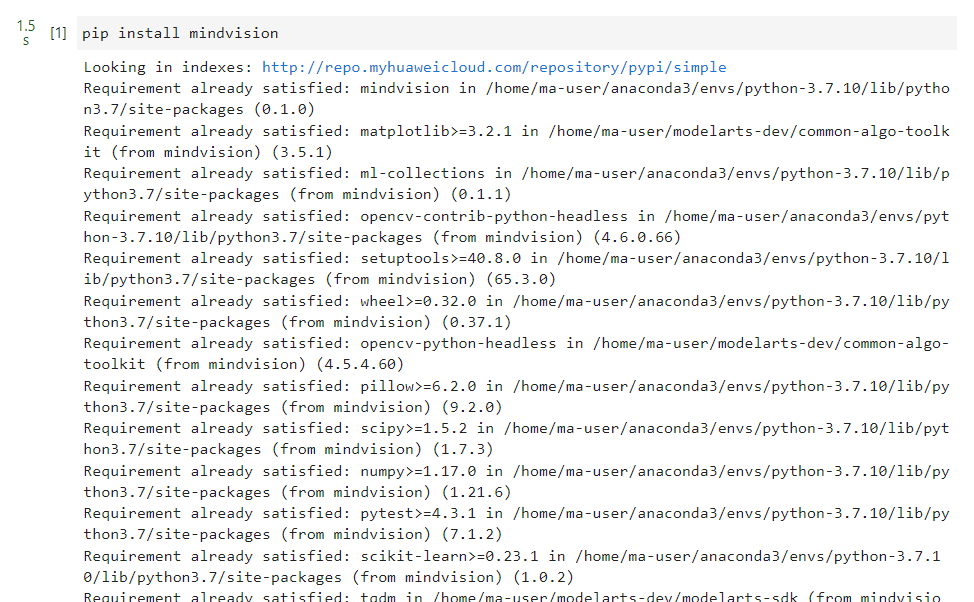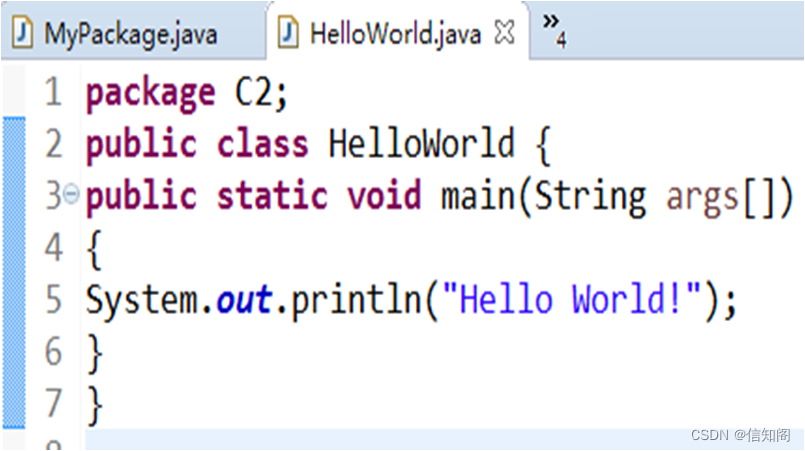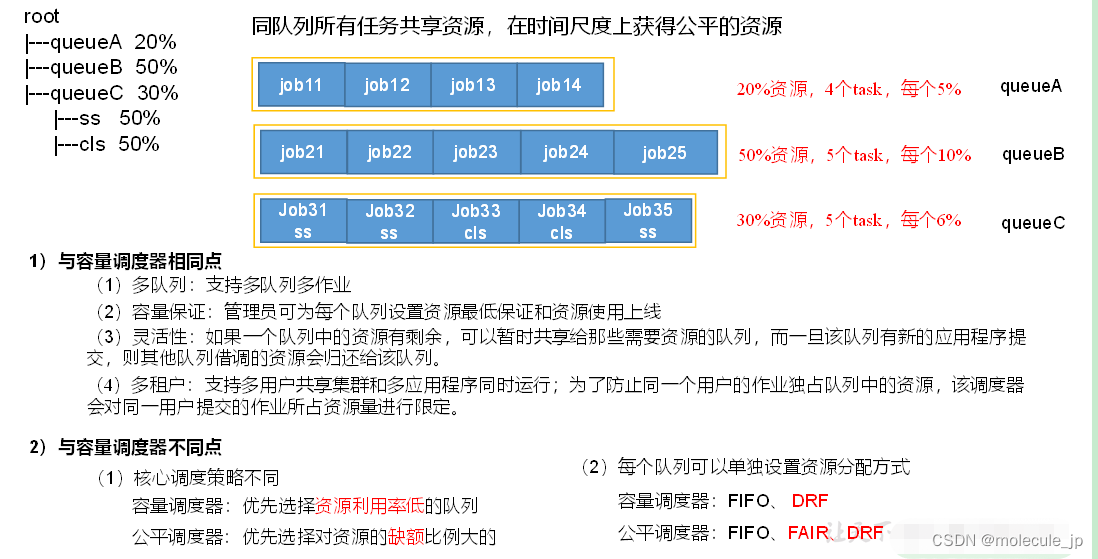一、引入
假设一个商品详情页需要以下操作:
查询展示商品的基本信息耗时:0.5s
查询展示商品的销售信息耗时:0.7s
查询展示商品的图片信息耗时:1s
查询展示商品销售属性耗时:0.3s
查询展示商品规格属性耗时:1.5s
查询展示商品详情信息耗时:1s
即使每个查询时间耗时不多,但是加起来却需要很长耗时。为了减少线性执行造成耗时的累积,这就需要引入异步处理做优化。
二、Future介绍
Future是Java 5添加的类,用来描述一个异步计算的结果。
优点:
可以使用 isDone 方法检查计算是否完成。
使用 get 阻塞住调用线程,直到计算完成返回结果。
可以使用 cancel 方法停止任务的执行。
缺点:
对于结果的获取却是很不方便,只能通过阻塞或者轮询的方式得到任务的结果。
阻塞的方式与我们想及时得到计算结果的期望相违背。
轮询的方式会消耗大量CPU资源,并且不能及时得到计算结果。
功能:
boolean cancel(boolean mayInterruptIfRunning);
1、尝试取消执行此任务。如果任务已经完成、已被取消或由于其他原因无法取消,则此尝试将失败。如果成功,并且调用 cancel
时此任务尚未启动,则此任务永远不会运行。
2、 如果任务已经开始,则mayInterruptIfRunning
参数确定是否应中断执行此任务的线程以尝试停止任务。 参数mayInterruptIfRunning 为true,表示执行此任务的线程应该被中断;否则,允许进行中的任务完成。 3、此方法返回后,后续调用isDone 将始终返回true。
4、如果此方法返回true,则对isCancelled 的后续调用将始终返回true。
boolean isCancelled();
如果此任务在正常完成之前被取消,则返回true,否则返回false。
boolean isDone();
如果此任务完成,则返回 true。任务完成可能是由于正常终止、异常或取消——在所有这些情况下,此方法将返回 true。
V get() throws InterruptedException, ExecutionException;
阻塞直至任务完成,然后检索其结果。 throws CancellationException:如果计算被取消 throws ExecutionException:如果计算抛出异常 throws InterruptedException:如果当前线程在等待时被中断
V get(long timeout, TimeUnit unit) throws InterruptedException,
ExecutionException, TimeoutException;
如有必要,最多等待计算完成的给定时间,然后检索其结果(如果可用)。
参数timeout:等待的最长时间 参数unit:超时参数的时间单位
throws CancellationException:如果计算被取消 throws
ExecutionException:如果计算抛出异常 throws InterruptedException:如果当前线程在等待时被中断
throws TimeoutException:如果等待超时
三、CompletableFuture
1、介绍
在Java 8中, 新增加了一个包含50个方法左右的类:CompletableFuture,提供了非常强大的Future的扩展功能,可以帮助我们简化异步编程的复杂性,提供了函数式编程的能力,可以通过回调的方式处理计算结果,并且提供了转换和组合CompletableFuture的方法。
CompletableFuture类实现了Future接口,所以你还是可以像以前一样通过 get方法阻塞或者轮询的方式获得结果,但是这种方式不推荐使用。
2、创建异步对象(runAsync、supplyAsync)
CompletableFuture 提供了四个静态方法来创建一个异步操作。
(带有Async默认是异步执行的。这里所谓的异步指的是不在当前线程内执行。)
public static CompletableFuture<Void> runAsync(Runnable runnable)
public static CompletableFuture<Void> runAsync(Runnable runnable, Executor executor)
public static <U> CompletableFuture<U> supplyAsync(Supplier<U> supplier)
public static <U> CompletableFuture<U> supplyAsync(Supplier<U> supplier, Executor executor)
方法分为两类:
runAsync 没有返回结果
supplyAsync 有返回结果
测试代码:
public class CompletableFutureDemo {
// corePoolSize:线程池的核心线程数量 线程池创建出来后就会 new Thread() 5个
// maximumPoolSize:最大的线程数量,线程池支持的最大的线程数
// keepAliveTime:存活时间,当线程数大于核心线程,空闲的线程的存活时间 50-5=45
// unit:存活时间的单位
// BlockingQueue<Runnable> workQueue:阻塞队列 当线程数超过了核心线程数据,那么新的请求到来的时候会加入到阻塞的队列中
// new LinkedBlockingQueue<>() 默认队列的长度是 Integer.MAX 那这个就太大了,所以我们需要指定队列的长度
// threadFactory:创建线程的工厂对象
// RejectedExecutionHandler handler:当线程数大于最大线程数的时候会执行的淘汰策略
private static ThreadPoolExecutor executor = new ThreadPoolExecutor(
5,
50,
10,
TimeUnit.SECONDS,
new LinkedBlockingDeque(1000),
Executors.defaultThreadFactory(),
new ThreadPoolExecutor.AbortPolicy()
);
public static void main(String[] args) throws ExecutionException, InterruptedException {
System.out.println("main方法开始了…………");
CompletableFuture<Void> voidCompletableFuture = CompletableFuture.runAsync(() -> {
System.out.println("线程开始了...");
System.out.println("当前线程---->" + Thread.currentThread().getName());
int i = 100 / 50;
System.out.println("线程结束了...");
}, executor);
System.out.println("main方法结束了…………");
System.out.println("-----------------------------");
CompletableFuture<Integer> integerCompletableFuture = CompletableFuture.supplyAsync(() -> {
System.out.println("线程开始了...");
System.out.println("当前线程---->" + Thread.currentThread().getName());
int i = 100 / 50;
System.out.println("线程结束了...");
return i;
}, executor);
System.out.println("integerCompletableFuture=" + integerCompletableFuture.get());
}
}
测试结果:

3、whenCompleteAsync、exceptionally和handleAsync
当CompletableFuture的计算结果完成,或者抛出异常的时候,可以执行特定的Action。主要是下面的方法:
public CompletableFuture<T> whenComplete(BiConsumer<? super T,? super Throwable> action);
public CompletableFuture<T> whenCompleteAsync(BiConsumer<? super T,? super Throwable> action);
public CompletableFuture<T> whenCompleteAsync(BiConsumer<? super T,? super Throwable> action, Executor executor);
public CompletableFuture<T> exceptionally(Function<Throwable,? extends T> fn);
public <U> CompletableFuture<U> handle(BiFunction<? super T, Throwable, ? extends U> fn) ;
public <U> CompletableFuture<U> handleAsync(BiFunction<? super T, Throwable, ? extends U> fn) ;
public <U> CompletableFuture<U> handleAsync(BiFunction<? super T, Throwable, ? extends U> fn, Executor executor) ;
3.1、whenCompleteAsync
可以获取异步任务的返回值和抛出的异常信息,但是不能修改返回结果。
测试代码:
public class CompletableFutureDemo1 {
private static ThreadPoolExecutor executor = new ThreadPoolExecutor(
5,
50,
10,
TimeUnit.SECONDS,
new LinkedBlockingDeque(1000),
Executors.defaultThreadFactory(),
new ThreadPoolExecutor.AbortPolicy()
);
public static void main(String[] args) throws ExecutionException, InterruptedException {
System.out.println("main方法开始了…………");
CompletableFuture<Integer> future = CompletableFuture.supplyAsync(() -> {
System.out.println("线程开始了...");
System.out.println("当前线程---->" + Thread.currentThread().getName());
int i = 100 / 2;
System.out.println("线程结束了...");
return i;
}, executor).whenCompleteAsync((res, e) -> { // 不能修改返回值
System.out.println("res= " + res);
System.out.println("e=" + e);
}, executor);
System.out.println("main方法结束了…………");
System.out.println("future=" + future.get());
}
}
测试结果:

3.2、exceptionally
当异步任务跑出了异常后会触发的方法,如果没有抛出异常该方法不会执行
测试代码:
public class CompletableFutureDemo1 {
private static ThreadPoolExecutor executor = new ThreadPoolExecutor(
5,
50,
10,
TimeUnit.SECONDS,
new LinkedBlockingDeque(1000),
Executors.defaultThreadFactory(),
new ThreadPoolExecutor.AbortPolicy()
);
public static void main(String[] args) throws ExecutionException, InterruptedException {
System.out.println("main方法开始了…………");
CompletableFuture<Integer> future = CompletableFuture.supplyAsync(() -> {
System.out.println("线程开始了...");
System.out.println("当前线程---->" + Thread.currentThread().getName());
int i = 100 / 0;
System.out.println("线程结束了...");
return i;
}, executor).whenCompleteAsync((res, e) -> { // 不能修改返回值
System.out.println("res= " + res);
System.out.println("e=" + e);
}, executor).exceptionally(e -> {
System.out.println("exceptionally执行了,e = " + e);
return 100;
});
System.out.println("main方法结束了…………");
System.out.println("future=" + future.get());
}
}
测试结果: 主动触发算术异常

测试结果: 将int i = 100 / 0;改为int i = 100 / 5;

3.2.1、拓展—>利用exceptionally达到显式地捕获相关异常的效果
示例:
@Test
public void test() {
CompletableFuture<Integer> future = createNewFile();
try {
Integer flag = future.get();
if (flag == 0) {
System.out.println("创建成功!!!");
} else if (flag == 1) {
System.out.println("捕获到NullPointerException,创建失败!!!");
} else if (flag == 2) {
System.out.println("捕获到IOException,创建失败!!!");
} else {
System.out.println("捕获到其他异常,创建失败!!!");
}
} catch (InterruptedException e) {
e.printStackTrace();
} catch (ExecutionException e) {
e.printStackTrace();
}
}
private CompletableFuture<Integer> createNewFile() {
CompletableFuture<Integer> future = CompletableFuture.supplyAsync(() -> {
File file = null;
try {
file.createNewFile();
} catch (IOException e) {
// 对于编译时异常,在CompletableFuture中不能直接向外抛出,
throw new RuntimeException(e.getMessage());
} catch (NullPointerException e) {
throw e;
}
return 0;
}).exceptionally(th -> {
// 走到这里,说明创建失败
if (th.getCause() instanceof NullPointerException) {
// 显式地修改返回值
return 1;
} else if (th.getCause() instanceof RuntimeException) {
return 2;
}
return 3;
});
return future;
}
效果:

3.2.2、拓展—>completeExceptionally
如果完成动作过程中抛出异常,将导致对get()和相关方法的调用引发给定的异常。
简而言之,future.completeExceptionally(e)是在完成过程中主动设置异常信息。(如果future未完成,抛出主动设置的异常信息。反之,则返回完成后的结果。)
案例:
@Test
public void test03() throws InterruptedException {
CompletableFuture<Integer> future = CompletableFuture.supplyAsync(() -> {
System.out.println("future start……");
try {
Thread.sleep(2 * 1000);
} catch (InterruptedException e) {
e.printStackTrace();
}
int i = 100 / 20;
System.out.println("future end……");
return i;
});
Thread.sleep(3 * 1000);
future.completeExceptionally(new RuntimeException("未完成时主动抛出异常!!!"));
try {
Integer res = future.get();
System.out.println("res = " + res);
} catch (ExecutionException e) {
// 可捕获主动抛出的异常
System.out.println("捕获主动抛出的异常ExecutionException");
e.printStackTrace();
}
}
效果 (future已完成计算):

如果将主线程Thread.sleep(3 * 1000);改为Thread.sleep(1 * 1000);
结果如下 (future未完成计算):

3.2.3、拓展—>obtrudeException
强制导致方法get()和相关方法的后续调用抛出给定的异常,无论是否已完成。
3.3、handleAsync
可以获取异步任务的返回值和抛出的异常信息,而且可以显示地修改返回的结果
测试代码:
public class CompletableFutureDemo1 {
private static ThreadPoolExecutor executor = new ThreadPoolExecutor(
5,
50,
10,
TimeUnit.SECONDS,
new LinkedBlockingDeque(1000),
Executors.defaultThreadFactory(),
new ThreadPoolExecutor.AbortPolicy()
);
public static void main(String[] args) throws ExecutionException, InterruptedException {
System.out.println("main方法开始了…………");
CompletableFuture<Integer> future = CompletableFuture.supplyAsync(() -> {
System.out.println("线程开始了...");
System.out.println("当前线程---->" + Thread.currentThread().getName());
int i = 100 / 5;
System.out.println("线程结束了...");
return i;
}, executor).handle((res, e) -> {
System.out.println("res = " + res);
System.out.println("e = " + e);
return 200;
});
System.out.println("main方法结束了…………");
System.out.println("future=" + future.get());
}
}
测试效果:

4、线程串行方法
thenRunAsync 方法:只要之前的执行完成就执行 thenRun的后续操作。(无接受参数,无返回)
thenAcceptAsync 方法:消费者模式,接受上一个任务处理的结果,并消费处理,无返回结果
thenApplyAsync 方法:当一个线程依赖另一个线程,获取上一个任务的返回结果,并返回当前任务的结果。
(带有Async默认是异步执行的。这里所谓的异步指的是不在当前线程内执行。)
public CompletionStage<Void> thenRun(Runnable action);
public CompletionStage<Void> thenRunAsync(Runnable action);
public CompletionStage<Void> thenRunAsync(Runnable action,Executor executor);
public CompletionStage<Void> thenAccept(Consumer<? super T> action);
public CompletionStage<Void> thenAcceptAsync(Consumer<? super T> action);
public CompletionStage<Void> thenAcceptAsync(Consumer<? super T> action,Executor executor);
public <U> CompletableFuture<U> thenApply(Function<? super T,? extends U> fn);
public <U> CompletableFuture<U> thenApplyAsync(Function<? super T,? extends U> fn);
public <U> CompletableFuture<U> thenApplyAsync(Function<? super T,? extends U> fn, Executor executor);
4.1、thenRunAsync 实现代码
public class CompletableFutureDemo2 {
private static ThreadPoolExecutor executor = new ThreadPoolExecutor(
5,
50,
10,
TimeUnit.SECONDS,
new LinkedBlockingDeque(1000),
Executors.defaultThreadFactory(),
new ThreadPoolExecutor.AbortPolicy()
);
public static void main(String[] args) throws ExecutionException, InterruptedException {
System.out.println("main方法开始了…………");
CompletableFuture.runAsync(() -> {
System.out.println("线程开始了...");
System.out.println("当前线程---->" + Thread.currentThread().getName());
int i = 100 / 5;
System.out.println("线程结束了...");
}, executor).thenRunAsync(()->{
System.out.println("thenRunAsync我进行操作了……………………");
});
}
}
4.2、thenRunAsync 实现效果

4.3、thenAcceptAsync 实现代码
public class CompletableFutureDemo2 {
private static ThreadPoolExecutor executor = new ThreadPoolExecutor(
5,
50,
10,
TimeUnit.SECONDS,
new LinkedBlockingDeque(1000),
Executors.defaultThreadFactory(),
new ThreadPoolExecutor.AbortPolicy()
);
public static void main(String[] args) throws ExecutionException, InterruptedException {
System.out.println("main方法开始了…………");
CompletableFuture<Void> voidCompletableFuture = CompletableFuture.supplyAsync(() -> {
System.out.println("线程开始了...");
System.out.println("当前线程---->" + Thread.currentThread().getName());
int i = 100 / 5;
System.out.println("线程结束了...");
return i;
}, executor).thenAcceptAsync(res -> {
System.out.println("thenAcceptAsync-------->" + res);
});
}
}
4.4、thenAcceptAsync 实现效果

4.5、thenApplyAsync 实现代码
public class CompletableFutureDemo2 {
private static ThreadPoolExecutor executor = new ThreadPoolExecutor(
5,
50,
10,
TimeUnit.SECONDS,
new LinkedBlockingDeque(1000),
Executors.defaultThreadFactory(),
new ThreadPoolExecutor.AbortPolicy()
);
public static void main(String[] args) throws ExecutionException, InterruptedException {
System.out.println("main方法开始了…………");
CompletableFuture<Integer> future = CompletableFuture.supplyAsync(() -> {
System.out.println("线程开始了...");
System.out.println("当前线程---->" + Thread.currentThread().getName());
int i = 100 / 5;
System.out.println("线程结束了...");
return i;
}, executor).thenApplyAsync(res -> {
System.out.println("thenAcceptAsync-------->" + res);
return 200;
});
System.out.println("future--------->" + future.get());
}
}
4.6、thenApplyAsync 实现效果

5、等待两个任务执行完成后才会触发
runAfterBothAsync 方法:不可以获取前面两线程的返回结果,本身也没有返回结果。
thenAcceptBothAsync 方法:可以获取前面两线程的返回结果,本身没有返回结果。
thenCombineAsync 方法:可以获取前面两线程的返回结果,本身也有返回结果
(带有Async默认是异步执行的。这里所谓的异步指的是不在当前线程内执行。)
5.1、runAfterBothAsync 实现代码
public class CompletableFutureDemo3 {
private static ThreadPoolExecutor executor = new ThreadPoolExecutor(
5,
50,
10,
TimeUnit.SECONDS,
new LinkedBlockingDeque(1000),
Executors.defaultThreadFactory(),
new ThreadPoolExecutor.AbortPolicy()
);
public static void main(String[] args) throws ExecutionException, InterruptedException {
System.out.println("main方法开始了…………");
CompletableFuture<Integer> future1 = CompletableFuture.supplyAsync(() -> {
System.out.println("future1线程开始了...");
System.out.println("当前线程---->" + Thread.currentThread().getName());
int i = 100 / 5;
System.out.println("future1线程结束了...");
return i;
}, executor);
CompletableFuture<Integer> future2 = CompletableFuture.supplyAsync(() -> {
System.out.println("future2线程开始了...");
System.out.println("当前线程---->" + Thread.currentThread().getName());
int i = 100 / 20;
// try {
// Thread.sleep(3000);
// } catch (InterruptedException e) {
// e.printStackTrace();
// }
System.out.println("future2线程结束了...");
return i;
}, executor);
future1.runAfterBothAsync(future2,()->{
System.out.println("任务3执行了");
},executor);
}
}
5.2、runAfterBothAsync 实现效果
如果放开Thread.sleep(3000);,那么 runAfterBothAsync 中的代码会等3s后(也就是等待 future1和 future2都执行完)才执行。

5.3、thenAcceptBothAsync 实现代码
public class CompletableFutureDemo3 {
private static ThreadPoolExecutor executor = new ThreadPoolExecutor(
5,
50,
10,
TimeUnit.SECONDS,
new LinkedBlockingDeque(1000),
Executors.defaultThreadFactory(),
new ThreadPoolExecutor.AbortPolicy()
);
public static void main(String[] args) throws ExecutionException, InterruptedException {
System.out.println("main方法开始了…………");
CompletableFuture<Integer> future1 = CompletableFuture.supplyAsync(() -> {
System.out.println("future1线程开始了...");
System.out.println("当前线程---->" + Thread.currentThread().getName());
int i = 100 / 5;
System.out.println("future1线程结束了...");
return i;
}, executor);
CompletableFuture<Integer> future2 = CompletableFuture.supplyAsync(() -> {
System.out.println("future2线程开始了...");
System.out.println("当前线程---->" + Thread.currentThread().getName());
int i = 100 / 20;
// try {
// Thread.sleep(3000);
// } catch (InterruptedException e) {
// e.printStackTrace();
// }
System.out.println("future2线程结束了...");
return i;
}, executor);
future1.thenAcceptBothAsync(future2, (res1, res2) -> {
System.out.println("thenAcceptBothAsync开始了");
System.out.println("res1 = " + res1);
System.out.println("res2 = " + res2);
System.out.println("thenAcceptBothAsync结束了");
},executor);
}
}
5.4、thenAcceptBothAsync 实现效果

5.5、thenCombineAsync 实现代码
public class CompletableFutureDemo3 {
private static ThreadPoolExecutor executor = new ThreadPoolExecutor(
5,
50,
10,
TimeUnit.SECONDS,
new LinkedBlockingDeque(1000),
Executors.defaultThreadFactory(),
new ThreadPoolExecutor.AbortPolicy()
);
public static void main(String[] args) throws ExecutionException, InterruptedException {
System.out.println("main方法开始了…………");
CompletableFuture<Integer> future1 = CompletableFuture.supplyAsync(() -> {
System.out.println("future1线程开始了...");
System.out.println("当前线程---->" + Thread.currentThread().getName());
int i = 100 / 5;
System.out.println("future1线程结束了...");
return i;
}, executor);
CompletableFuture<Integer> future2 = CompletableFuture.supplyAsync(() -> {
System.out.println("future2线程开始了...");
System.out.println("当前线程---->" + Thread.currentThread().getName());
int i = 100 / 20;
// try {
// Thread.sleep(3000);
// } catch (InterruptedException e) {
// e.printStackTrace();
// }
System.out.println("future2线程结束了...");
return i;
}, executor);
CompletableFuture<Integer> future3 = future1.thenCombineAsync(future2, (res1, res2) -> {
System.out.println("future3开始了");
return res1 + res2;
}, executor);
System.out.println("future3.get()=" + future3.get());
}
}
5.6、thenCombineAsync 实现效果

6、两个任务完成一个就会触发
两个任务只要有一个完成就会触发。
(对于acceptEitherAsync、applyToEitherAsync可接受前面两任务返回结果来说,如果任务有返回值,哪个任务先执行完先获取其结果作为参数)
runAfterEitherAsync 方法:
不可以获取前面两线程的返回结果,本身也没有返回结果。
acceptEitherAsync方法:
可以获取前面两线程的返回结果,本身也没有返回结果。 applyToEitherAsync方法:
可以获取前面两线程的返回结果,本身有返回结果。 (带有Async默认是异步执行的。这里所谓的异步指的是不在当前线程内执行。)
6.1、runAfterEitherAsync 实现代码
public class CompletableFutureDemo4 {
private static ThreadPoolExecutor executor = new ThreadPoolExecutor(
5,
50,
10,
TimeUnit.SECONDS,
new LinkedBlockingDeque(1000),
Executors.defaultThreadFactory(),
new ThreadPoolExecutor.AbortPolicy()
);
public static void main(String[] args) throws ExecutionException, InterruptedException {
System.out.println("main方法开始了…………");
CompletableFuture<Integer> future1 = CompletableFuture.supplyAsync(() -> {
System.out.println("future1线程开始了...");
System.out.println("当前线程---->" + Thread.currentThread().getName());
int i = 100 / 5;
// try {
// Thread.sleep(3000);
// } catch (InterruptedException e) {
// e.printStackTrace();
// }
System.out.println("future1线程结束了...");
return i;
}, executor);
CompletableFuture<Integer> future2 = CompletableFuture.supplyAsync(() -> {
System.out.println("future2线程开始了...");
System.out.println("当前线程---->" + Thread.currentThread().getName());
int i = 100 / 20;
// try {
// Thread.sleep(3000);
// } catch (InterruptedException e) {
// e.printStackTrace();
// }
System.out.println("future2线程结束了...");
return i;
}, executor);
future1.runAfterEitherAsync(future2,()->{
System.out.println("runAfterEitherAsync任务执行了");
},executor);
}
}
6.2、runAfterEitherAsync 实现效果

6.3、acceptEitherAsync 实现代码
public class CompletableFutureDemo4 {
private static ThreadPoolExecutor executor = new ThreadPoolExecutor(
5,
50,
10,
TimeUnit.SECONDS,
new LinkedBlockingDeque(1000),
Executors.defaultThreadFactory(),
new ThreadPoolExecutor.AbortPolicy()
);
public static void main(String[] args) throws ExecutionException, InterruptedException {
System.out.println("main方法开始了…………");
CompletableFuture<Integer> future1 = CompletableFuture.supplyAsync(() -> {
System.out.println("future1线程开始了...");
System.out.println("当前线程---->" + Thread.currentThread().getName());
int i = 100 / 5;
try {
Thread.sleep(3000);
} catch (InterruptedException e) {
e.printStackTrace();
}
System.out.println("future1线程结束了...");
return i;
}, executor);
CompletableFuture<Integer> future2 = CompletableFuture.supplyAsync(() -> {
System.out.println("future2线程开始了...");
System.out.println("当前线程---->" + Thread.currentThread().getName());
int i = 100 / 20;
// try {
// Thread.sleep(3000);
// } catch (InterruptedException e) {
// e.printStackTrace();
// }
System.out.println("future2线程结束了...");
return i;
}, executor);
future1.acceptEitherAsync(future2, (res) -> {
System.out.println("acceptEitherAsync开始了");
System.out.println("res = " + res);
},executor);
}
}
6.4、acceptEitherAsync 实现效果

6.5、applyToEitherAsync 实现代码
public class CompletableFutureDemo4 {
private static ThreadPoolExecutor executor = new ThreadPoolExecutor(
5,
50,
10,
TimeUnit.SECONDS,
new LinkedBlockingDeque(1000),
Executors.defaultThreadFactory(),
new ThreadPoolExecutor.AbortPolicy()
);
public static void main(String[] args) throws ExecutionException, InterruptedException {
System.out.println("main方法开始了…………");
CompletableFuture<Integer> future1 = CompletableFuture.supplyAsync(() -> {
System.out.println("future1线程开始了...");
System.out.println("当前线程---->" + Thread.currentThread().getName());
int i = 100 / 5;
try {
Thread.sleep(3000);
} catch (InterruptedException e) {
e.printStackTrace();
}
System.out.println("future1线程结束了...");
return i;
}, executor);
CompletableFuture<Integer> future2 = CompletableFuture.supplyAsync(() -> {
System.out.println("future2线程开始了...");
System.out.println("当前线程---->" + Thread.currentThread().getName());
int i = 100 / 20;
// try {
// Thread.sleep(3000);
// } catch (InterruptedException e) {
// e.printStackTrace();
// }
System.out.println("future2线程结束了...");
return i;
}, executor);
CompletableFuture<Integer> future3 = future1.applyToEitherAsync(future2, (res) -> {
System.out.println("future3开始了");
System.out.println("res = " + res);
return res;
}, executor);
System.out.println("future3.get()=" + future3.get());
}
}
6.6、applyToEitherAsync 实现效果

7、多任务组合
anyOf 方法:只要有一个任务完成。
allOf 方法:等待所有任务完成。
public static CompletableFuture<Object> anyOf(CompletableFuture<?>... cfs);
public static CompletableFuture<Void> allOf(CompletableFuture<?>... cfs);
7.1、anyOf 实现代码
只要有一个任务完成就会触发。
public class CompletableFutureDemo5 {
private static ThreadPoolExecutor executor = new ThreadPoolExecutor(
5,
50,
10,
TimeUnit.SECONDS,
new LinkedBlockingDeque(1000),
Executors.defaultThreadFactory(),
new ThreadPoolExecutor.AbortPolicy()
);
/**
* anyOf:只要有一个线程完成,那么就不阻塞
* allOf:所有线程都完成,在 get方法阻塞直至所有线程都完成
*/
public static void main(String[] args) throws ExecutionException, InterruptedException {
System.out.println("main方法开始了…………");
CompletableFuture<Integer> future1 = CompletableFuture.supplyAsync(() -> {
System.out.println("future1线程开始了...");
System.out.println("当前线程---->" + Thread.currentThread().getName());
int i = 100 / 5;
try {
Thread.sleep(3000);
} catch (InterruptedException e) {
e.printStackTrace();
}
System.out.println("future1线程结束了...");
return i;
}, executor);
CompletableFuture<Integer> future2 = CompletableFuture.supplyAsync(() -> {
System.out.println("future2线程开始了...");
System.out.println("当前线程---->" + Thread.currentThread().getName());
int i = 100 / 20;
System.out.println("future2线程结束了...");
return i;
}, executor);
CompletableFuture<Object> anyOf = CompletableFuture.anyOf(future1, future2);
anyOf.get();
System.out.println("主任务完成anyOf:" + anyOf.get());
}
}
7.2、anyOf 实现效果

7.3、allOf 实现代码
阻塞等待所有任务完成才会触发。
public class CompletableFutureDemo5 {
private static ThreadPoolExecutor executor = new ThreadPoolExecutor(
5,
50,
10,
TimeUnit.SECONDS,
new LinkedBlockingDeque(1000),
Executors.defaultThreadFactory(),
new ThreadPoolExecutor.AbortPolicy()
);
/**
* anyOf:只要有一个线程完成,那么就不阻塞
* allOf:所有线程都完成,在 get方法阻塞直至所有线程都完成
*/
public static void main(String[] args) throws ExecutionException, InterruptedException {
System.out.println("main方法开始了…………");
CompletableFuture<Integer> future1 = CompletableFuture.supplyAsync(() -> {
System.out.println("future1线程开始了...");
System.out.println("当前线程---->" + Thread.currentThread().getName());
int i = 100 / 5;
try {
Thread.sleep(3000);
} catch (InterruptedException e) {
e.printStackTrace();
}
System.out.println("future1线程结束了...");
return i;
}, executor);
CompletableFuture<Integer> future2 = CompletableFuture.supplyAsync(() -> {
System.out.println("future2线程开始了...");
System.out.println("当前线程---->" + Thread.currentThread().getName());
int i = 100 / 20;
System.out.println("future2线程结束了...");
return i;
}, executor);
CompletableFuture<Void> allOf = CompletableFuture.allOf(future1, future2);
allOf.get(); // 阻塞在这个位置,等待所有线程的完成
System.out.println("主任务完成allOf:" + future1.get() + "," + future2.get());
}
}
7.4、allOf 实现效果

8、细节
8.1、thenApply与thenCompose区别
public <U> CompletableFuture<U> thenApply(
Function<? super T,? extends U> fn) {
return uniApplyStage(null, fn);
}
public <U> CompletableFuture<U> thenCompose(
Function<? super T, ? extends CompletionStage<U>> fn) {
return uniComposeStage(null, fn);
}
thenApply:返回的是泛型中的类型转化为返回值类型的CompletableFuture对象。
thenCompose:返回的是一个扁平化的CompletableFuture对象。
(用来连接两个CompletableFuture,是生成一个新的CompletableFuture。特别像stream().flatMap扁平化处理)
区别:当返回是CompletableFuture的话,thenApply是嵌套,而thenCompose扁平化。
public class CompletableFutureTest {
public static void main(String[] args) {
CompletableFuture<Integer> apply = CompletableFuture.supplyAsync(() -> {
int i;
try {
i = 100 / 2;
} catch (Exception e) {
throw new RuntimeException("算术异常!!!");
}
return i;
});
// thenApply返回的如果是CompletableFuture,就会嵌套起来
CompletableFuture<? extends CompletableFuture<?>> apply1 = apply.thenApply(res -> {
System.out.println("res1 = " + res);
System.out.println("apply1当前还在执行中……");
return CompletableFuture.completedFuture(res);
});
CompletableFuture<? extends CompletableFuture<?>> apply2 = apply.thenApply(res -> {
System.out.println("res2 = " + res);
System.out.println("apply2当前还在执行中……");
return CompletableFuture.completedFuture(res);
});
// thenCompose不同,返回的扁平化之后的一维CompletableFuture
CompletableFuture<?> compose = apply.thenCompose(res -> {
System.out.println("res3 = " + res);
System.out.println("compose当前还在执行中……");
return CompletableFuture.completedFuture(res);
});
System.out.println(apply1 == apply2);
try {
apply.get();
} catch (InterruptedException e) {
e.printStackTrace();
} catch (ExecutionException e) {
e.printStackTrace();
}
}
}
测试效果:

总结


